
|
Now it is 8.5 mag (Nov. 1, Virgilio Gonano). It will fade out rapidly after this. In the Northern Hemisphere, it will be getting lower gradually after this, and it will be unobservable in January. But it will be observable again in November. In the Southern Hemisphere, it is not observable now, but it will be observable soon.
Date(TT) R.A. (2000) Decl. Delta r Elong. m1 Best Time(A, h)
Nov. 4 15 2.21 48 51.3 0.319 0.901 64 8.1 18:29 (133, 24)
Nov. 11 18 40.83 18 37.5 0.193 0.924 64 7.1 18:24 ( 74, 47)
|
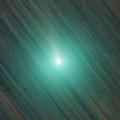
|
Now it is 8.4 mag (Oct. 16, Marek Biely). It will fade out rapidly after this. It stays observable in good condition.
Date(TT) R.A. (2000) Decl. Delta r Elong. m1 Best Time(A, h)
Nov. 4 8 34.93 4 0.8 0.480 1.109 90 7.7 4:57 (338, 57)
Nov. 11 8 47.10 -0 6.9 0.504 1.139 93 7.8 5:03 (349, 54)
|
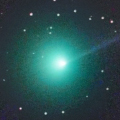
|
Now it is 8.2 mag (Oct. 12, Virgilio Gonano). It will fade out rapidly after this. It will be fainter than 18 mag in January. It will never be observable after this.
Date(TT) R.A. (2000) Decl. Delta r Elong. m1 Best Time(A, h)
Nov. 4 14 38.67 -19 9.9 1.455 0.471 4 8.8 18:29 ( 79,-19)
Nov. 11 15 27.71 -23 17.6 1.557 0.596 8 9.7 18:24 ( 72,-16)
|
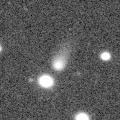
|
It is expected to brighten up to 7 mag in early 2024. Now it is 12.3 mag (Sept. 16, Jose G. S. Aguiar). Brightening gradually. It stays extremely low in the Northern Hemisphere. But it will become high in winter. It locates somewhat low in the Southern Hemisphere. But it will become high in winter. The brightness evolution slowed down since May.
Date(TT) R.A. (2000) Decl. Delta r Elong. m1 Best Time(A, h)
Nov. 4 11 34.36 -37 34.5 2.543 1.979 45 10.0 4:57 (319, 0)
Nov. 11 11 55.55 -38 25.8 2.464 1.910 45 9.8 5:03 (321, 1)
|

|
It is expected to brighten up to 7 mag, and it will be observable in good condition in winter. Now it is 12.2 mag (Oct. 26, Osamu Miyazaki). Brightening rapidly. In the Northern Hemisphere, it stays observable in good condition.
Date(TT) R.A. (2000) Decl. Delta r Elong. m1 Best Time(A, h)
Nov. 4 7 58.34 21 27.1 0.785 1.403 103 11.4 4:57 (350, 76)
Nov. 11 8 24.94 20 55.7 0.730 1.369 104 10.5 5:03 (357, 76)
|

|
Now it is 10.5 mag (Oct. 29, Giuseppe Pappa). Fading gradually. In the Northern Hemisphere, it will be unobservable in January. In the Southern Hemisphere, it stays observable in good condition.
Date(TT) R.A. (2000) Decl. Delta r Elong. m1 Best Time(A, h)
Nov. 4 0 3.36 -42 24.7 2.472 3.000 112 10.7 21:09 ( 0, 13)
Nov. 11 23 50.08 -42 55.1 2.633 3.050 105 10.9 20:29 ( 0, 12)
|
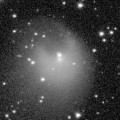
|
It returns for the first time in 70 years. It will brighten up to 4.5 mag in 2024 spring. It suddenly brightened in outburst by 5 mag up to 11.5 mag on July 20 (E. Tamas, Francois Kugel). It brightened again in another outburst up to 11.7 mag on Oct. 5 (Richard Miles). Another outburst occured on Oct. 31 (Francois Kugel). Now it is 10.9 mag (Nov. 3, Nicolas Biver). It will brighten rapidly after this. In the Northern Hemisphere, it will be getting lower gradually. In the Southern Hemisphere, it is not observable now.
Date(TT) R.A. (2000) Decl. Delta r Elong. m1 Best Time(A, h)
Nov. 4 17 45.54 41 25.0 2.858 2.715 71 11.3 18:29 (115, 48)
Nov. 11 17 54.35 40 32.4 2.797 2.632 70 11.2 18:24 (115, 45)
|
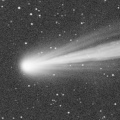
|
It approached to Sun down to 0.23 a.u. and brightened up to 2.5 mag in mid September (Sept. 18, Juan Jose Gonzalez). Now it is 12.5 mag (Nov. 3, Sam Deen). Fading rapidly. It will be fainter than 18 mag in January. In the Northern Hemisphere, it is not observable now, but it will be observable soon. In the Southern Hemisphere, it will be getting higher gradually.
Date(TT) R.A. (2000) Decl. Delta r Elong. m1 Best Time(A, h)
Nov. 4 12 55.05 -32 42.9 2.027 1.250 28 12.2 4:57 (304, -9)
Nov. 11 12 54.22 -35 21.9 2.094 1.384 33 13.0 5:03 (311, -5)
|

|
It brightened up to 8 mag from 2022 summer to 2023 spring. Now it is 12.5 mag (Oct. 26, Osamu Miyazaki). Fading slowly. It stays observable in good condition.
Date(TT) R.A. (2000) Decl. Delta r Elong. m1 Best Time(A, h)
Nov. 4 6 36.36 -8 2.1 3.566 4.095 115 12.2 3:46 ( 0, 47)
Nov. 11 6 30.82 -7 48.2 3.539 4.158 122 12.2 3:13 ( 0, 47)
|

|
It brightened up to 7.8 mag in late July (July 20, Thomas Lehmann). Now it is 12.9 mag (Oct. 3, Chris Wyatt). Fading slowly. Now it is not observable. It will appear in December.
Date(TT) R.A. (2000) Decl. Delta r Elong. m1 Best Time(A, h)
Nov. 4 15 3.69 -10 44.0 2.955 1.979 8 12.8 18:29 ( 84,-10)
Nov. 11 15 6.16 -10 15.9 3.020 2.041 6 13.0 18:24 ( 87,-14)
|
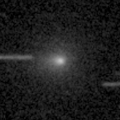
|
Now it is 12.8 mag (Oct. 17, Ken-ichi Kadota). It will fade out rapidly after this. It will be fainter than 18 mag in March. In the Northern Hemisphere, it stays observable in good condition. It locates somewhat low in the Southern Hemisphere.
Date(TT) R.A. (2000) Decl. Delta r Elong. m1 Best Time(A, h)
Nov. 4 18 36.55 -4 32.1 1.195 1.115 60 12.9 18:29 ( 53, 35)
Nov. 11 19 12.48 -3 49.5 1.200 1.153 62 13.0 18:24 ( 50, 38)
|

|
Now it is 14.3 mag (Oct. 16, Martin Masek). It stays 13 mag for a while. It stays extremely low in the Northern Hemisphere. In the Southern Hemisphere, it stays observable in good condition.
Date(TT) R.A. (2000) Decl. Delta r Elong. m1 Best Time(A, h)
Nov. 4 10 45.97 -28 24.7 4.622 4.120 54 13.2 4:57 (321, 14)
Nov. 11 10 44.95 -30 3.8 4.562 4.149 59 13.2 5:03 (328, 17)
|
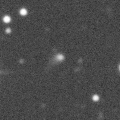
|
Now it is 14.2 mag (Oct. 19, Ken-ichi Kadota). Brightening slowly. In the Northern Hemisphere, it stays observable in good condition. In the Southern Hemisphere, it will be getting higher gradually. It is expected to brighten up to 12 mag from 2024 to 2025.
Date(TT) R.A. (2000) Decl. Delta r Elong. m1 Best Time(A, h)
Nov. 4 9 43.19 5 32.8 4.753 4.596 74 13.9 4:57 (311, 50)
Nov. 11 9 42.64 5 59.9 4.589 4.561 82 13.7 5:03 (322, 55)
|

|
Now it is 12.1 mag (Oct. 15, Hiroshi Abe). In the Northern Hemisphere, it stays observable in good condition.
Date(TT) R.A. (2000) Decl. Delta r Elong. m1 Best Time(A, h)
Nov. 4 8 42.05 20 42.0 6.009 6.150 93 13.8 4:57 (317, 71)
Nov. 11 8 43.22 20 35.8 5.898 6.152 100 13.8 5:03 (340, 75)
|

|
It brightened up to 8.3 mag in 2021-2022 winter (Jan. 6, 2022, Toshiyuki Takahashi). Now it is 13.2 mag (July 14, Chris Wyatt). It stays 14 mag for a while. It stays extremely low in the Northern Hemisphere. In the Southern Hemisphere, it stays observable in good condition.
Date(TT) R.A. (2000) Decl. Delta r Elong. m1 Best Time(A, h)
Nov. 4 11 10.96 -41 31.2 7.234 6.655 50 13.9 4:57 (325, 0)
Nov. 11 11 14.82 -42 30.5 7.231 6.700 54 14.0 5:03 (330, 3)
|

|
Now it is 14.0 mag (Oct. 14, Chris Wyatt). It stays 15 mag for a while. In the Northern Hemisphere, it is not observable now. In the Southern Hemisphere, it stays observable in good condition. It was expected to brighten up to 10 mag from spring to summer. However, it was fainter than originally expected.
Date(TT) R.A. (2000) Decl. Delta r Elong. m1 Best Time(A, h)
Nov. 4 12 3.23 -79 54.6 3.796 3.529 67 14.2 4:57 (350,-30)
Nov. 11 11 59.70 -81 14.3 3.833 3.562 66 14.3 5:03 (352,-30)
|
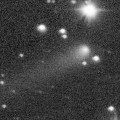
|
Now it is 14.7 mag (Nov. 1, Ken-ichi Kadota). Fading slowly. It will be getting lower gradually after this, and it will be unobservable in January in the Southern Hemisphere, or in February in the Northern Hemisphere.
Date(TT) R.A. (2000) Decl. Delta r Elong. m1 Best Time(A, h)
Nov. 4 23 9.55 3 44.0 2.872 3.574 128 14.3 20:16 ( 0, 59)
Nov. 11 22 59.41 3 24.7 3.017 3.602 118 14.5 19:38 ( 0, 59)
|
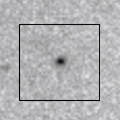
|
It is expected to brighten up to 8.5 mag from January to February. Now it is 17.2 mag (Oct. 24, Taras Prystavski). Brightening rapidly. It stays observable in good condition. It is much fainter than this ephemeris recently.
Date(TT) R.A. (2000) Decl. Delta r Elong. m1 Best Time(A, h)
Nov. 4 2 59.01 20 13.4 0.693 1.681 172 14.9 0:10 ( 0, 75)
Nov. 11 2 55.93 19 29.0 0.650 1.640 177 14.4 23:35 ( 0, 75)
|
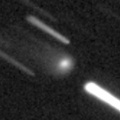
|
Now it is 14.9 mag (Sept. 18, Ken-ichi Kadota). Brightening slowly. Now it is not observable. It will appear in December. It is expected to brighten up to 12.5 mag in 2024 spring. At the high light, it will be observable in excellent condition in the Southern Hemisphere, but it will be low in the Northern Hemisphere.
Date(TT) R.A. (2000) Decl. Delta r Elong. m1 Best Time(A, h)
Nov. 4 15 15.00 -7 17.0 3.969 3.009 12 14.6 18:29 ( 85, -6)
Nov. 11 15 17.24 -8 32.8 3.950 2.978 9 14.5 18:24 ( 87,-10)
|
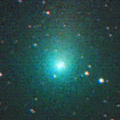
|
It brightened up to 9.5 mag from last winter to early spring (Jan. 30, Katsumi Yoshimoto). Now it is 13.9 mag (Oct. 17, Osamu Miyazaki). It will fade out rapidly after this. It will be getting lower gradually after this, and it will be unobservable in February.
Date(TT) R.A. (2000) Decl. Delta r Elong. m1 Best Time(A, h)
Nov. 4 22 34.83 -8 26.1 2.995 3.546 116 14.6 19:42 ( 0, 47)
Nov. 11 22 33.22 -9 46.9 3.175 3.611 108 14.9 19:13 ( 0, 45)
|

|
The ATLAS search program detected its cometary activity in April. It continues to be brightening even after the perihelion passage. Now it is 14.1 mag (Oct. 29, Ken-ichi Kadota). It will fade out rapidly after this. It will be fainter than 18 mag in January. It stays observable in good condition.
Date(TT) R.A. (2000) Decl. Delta r Elong. m1 Best Time(A, h)
Nov. 4 23 31.13 -23 7.6 2.657 3.282 121 14.7 20:38 ( 0, 32)
Nov. 11 23 32.23 -22 5.4 2.774 3.321 115 15.0 20:12 ( 0, 33)
|

|
Now it is 15.2 mag (July 22, ATLAS Chile). It stays 14 mag for a while. It stays extremely low in the Northern Hemisphere. In the Southern Hemisphere, it will be getting higher gradually.
Date(TT) R.A. (2000) Decl. Delta r Elong. m1 Best Time(A, h)
Nov. 4 11 27.74 -32 6.7 6.166 5.517 45 14.9 4:57 (316, 5)
Nov. 11 11 33.81 -32 44.0 6.091 5.495 49 14.8 5:03 (321, 9)
|
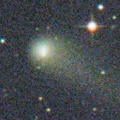
|
It brightened up to 11.1 mag in early 2022 (Mar. 31, 2022, F. Kugel, J.-G. Bosch, J. Nicolas). Now it is 14.6 mag (Oct. 26, Ken-ichi Kadota). It stays 15 mag for a while. It locates somewhat low in the Northern Hemisphere. But it will become high in winter. In the Southern Hemisphere, it is not observable now, but it will appear in February.
Date(TT) R.A. (2000) Decl. Delta r Elong. m1 Best Time(A, h)
Nov. 4 16 12.19 15 49.4 6.656 5.922 39 14.9 18:29 ( 96, 19)
Nov. 11 16 18.14 15 43.2 6.710 5.959 37 14.9 18:24 ( 98, 16)
|
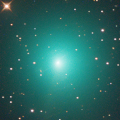
|
It brightened up to 8.4 mag in late July (July 22, Thomas Lehmann). Now it is 16.9 mag (Oct. 29, Ken-ichi Kadota). Fading rapidly. It will be fainter than 18 mag in January. It stays observable in good condition.
Date(TT) R.A. (2000) Decl. Delta r Elong. m1 Best Time(A, h)
Nov. 4 22 54.36 -25 27.8 1.556 2.146 112 14.9 20:02 ( 0, 30)
Nov. 11 23 1.54 -25 22.0 1.716 2.226 107 15.4 19:41 ( 0, 30)
|
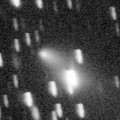
|
It brightened up to 13.6 mag in summer (July 16, Mitsunori Tsumura). Now it is 15.0 mag (Oct. 23, Ken-ichi Kadota). It will fade out rapidly after this. It will be fainter than 18 mag in February. In the Northern Hemisphere, it stays observable in good condition. In the Southern Hemisphere, it will never be observable after this.
Date(TT) R.A. (2000) Decl. Delta r Elong. m1 Best Time(A, h)
Nov. 4 23 55.78 70 32.7 1.474 2.145 119 15.0 21:01 (180, 54)
Nov. 11 23 36.09 69 55.4 1.531 2.188 118 15.2 20:14 (180, 55)
|

|
It is expected to brighten up to 14.5 mag in winter. Now it is 15.8 mag (Oct. 25, ATLAS Chile). It stays 15 mag for a while. It stays observable in good condition.
Date(TT) R.A. (2000) Decl. Delta r Elong. m1 Best Time(A, h)
Nov. 4 3 18.08 16 4.5 1.515 2.496 169 15.2 0:29 ( 0, 71)
Nov. 11 3 12.14 16 14.7 1.473 2.463 177 15.0 23:50 ( 0, 71)
|

|
It will approach to Sun down to 0.4 a.u. in late September in 2024, and it is expected to brighten up to 0 mag. Now it is 15.3 mag (Sept. 10, A. Ivanov et al.). Brightening gradually. Now it is not observable. It will appear soon in the Northern Hemisphere, or in December in the Southern Hemisphere. At the high light, in the Northern Hemisphere, it will be observable in good condition after the perihelion passage. In the Southern Hemisphere, it will be observable in the low sky before and after the perihelion passage.
Date(TT) R.A. (2000) Decl. Delta r Elong. m1 Best Time(A, h)
Nov. 4 14 30.68 -4 16.1 5.851 4.881 10 15.2 4:57 (267,-11)
Nov. 11 14 34.46 -4 43.4 5.760 4.806 14 15.1 5:03 (272, -6)
|

|
Now it is 16.2 mag (Oct. 26, ATLAS South Africa). Fading slowly. In the Northern Hemisphere, it will be getting higher gradually. In the Southern Hemisphere, it stays observable in good condition.
Date(TT) R.A. (2000) Decl. Delta r Elong. m1 Best Time(A, h)
Nov. 4 1 1.25 -48 30.5 1.211 1.842 113 15.7 22:07 ( 0, 7)
Nov. 11 0 50.76 -44 24.4 1.213 1.826 111 15.5 21:29 ( 0, 11)
|

|
It is expected to brighten up to 14 mag in 2024 summer. At the high light, it is not observable in the Northern Hemisphere. Now it is 16.3 mag (Oct. 17, Yukihiro Sugiyama). It stays 15 mag for a while. In the Southern Hemisphere, it stays observable in good condition.
Date(TT) R.A. (2000) Decl. Delta r Elong. m1 Best Time(A, h)
Nov. 4 2 46.99 -19 26.8 2.923 3.781 145 15.6 23:52 ( 0, 35)
Nov. 11 2 38.03 -21 33.7 2.916 3.736 140 15.5 23:16 ( 0, 33)
|

|
David Rankin detected its cometary activity in June. Now it is 15.5 mag (Oct. 13, Michael Jager). Fading slowly. In the Northern Hemisphere, it stays observable in good condition. In the Southern Hemisphere, it will be getting lower gradually.
Date(TT) R.A. (2000) Decl. Delta r Elong. m1 Best Time(A, h)
Nov. 4 22 17.40 -3 43.7 1.568 2.167 113 15.6 19:25 ( 0, 51)
Nov. 11 22 23.86 -3 18.9 1.627 2.155 108 15.6 19:04 ( 0, 52)
|

|
It has not been observed yet in this apparition. It was expected to brighten rapidly up to 15 mag in summer. But actually, it is not detected, fainter than 18 mag (Oct. 14, Martin Masek). Fading slowly. It will be unobservable in January in the Southern Hemisphere, or in February in the Northern Hemisphere.
Date(TT) R.A. (2000) Decl. Delta r Elong. m1 Best Time(A, h)
Nov. 4 19 12.17 -21 58.1 2.171 1.981 65 15.6 18:29 ( 33, 25)
Nov. 11 19 27.79 -21 0.5 2.233 1.980 62 15.7 18:24 ( 35, 26)
|

|
Now it is 14.3 mag (July 7, Thomas Lehmann). It stays 16 mag for a while. In the Northern Hemisphere, it is not observable now, but it will appear in January. It locates somewhat low in the Southern Hemisphere. But it will become high in winter.
Date(TT) R.A. (2000) Decl. Delta r Elong. m1 Best Time(A, h)
Nov. 4 14 9.88 -49 11.8 3.740 2.976 34 15.7 4:57 (312,-29)
Nov. 11 14 25.22 -49 6.4 3.816 3.031 32 15.8 5:03 (313,-26)
|

|
It will fade out rapidly after this. It will be fainter than 18 mag in January. In the Northern Hemisphere, it will be getting higher gradually. It stays extremely low in the Southern Hemisphere.
Date(TT) R.A. (2000) Decl. Delta r Elong. m1 Best Time(A, h)
Nov. 4 16 35.13 -8 26.2 0.817 0.502 30 15.7 18:29 ( 72, 11)
Nov. 11 17 46.44 -4 25.1 0.774 0.666 42 15.9 18:24 ( 67, 23)
|
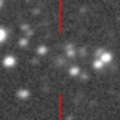
|
Now it is 16.8 mag (Oct. 16, ATLAS South Africa). Fading slowly. It will be unobservable in January.
Date(TT) R.A. (2000) Decl. Delta r Elong. m1 Best Time(A, h)
Nov. 4 19 11.21 -34 35.9 3.266 2.978 64 15.9 18:29 ( 27, 14)
Nov. 11 19 22.64 -34 30.8 3.357 2.989 60 16.0 18:24 ( 29, 13)
|

|
It approached to Earth down to 0.29 a.u. in early February, and it brightened up to 4.5 mag (Feb. 1, Juan Jose Gonzalez). Now it is 16.7 mag (Oct. 18, ATLAS South Africa). Fading slowly. In the Northern Hemisphere, it will never be observable after this. In the Southern Hemisphere, it stays observable in good condition.
Date(TT) R.A. (2000) Decl. Delta r Elong. m1 Best Time(A, h)
Nov. 4 5 50.13 -59 4.2 3.833 4.056 95 16.0 3:00 ( 0, -4)
Nov. 11 5 34.70 -60 33.6 3.898 4.127 96 16.1 2:17 ( 0, -5)
|
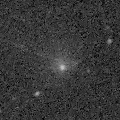
|
Very large comet. It is expected to brighten up to 13 mag in 2031. Now it is 15.9 mag (Oct. 15, Thomas Lehmann). It stays 16 mag for a while. In the Northern Hemisphere, it is not observable now. In the Southern Hemisphere, it stays observable in good condition. In the Northern Hemisphere, it is not observable until 2030.
Date(TT) R.A. (2000) Decl. Delta r Elong. m1 Best Time(A, h)
Nov. 4 3 17.76 -65 47.6 16.876 17.054 98 16.1 0:27 ( 0,-11)
Nov. 11 3 14.63 -65 56.2 16.883 17.029 96 16.1 23:52 ( 0,-11)
|
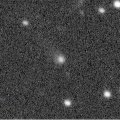
|
Now it is 16.7 mag (Oct. 18, ATLAS South Africa). It stays 16 mag for a while. In the Northern Hemisphere, it will be unobservable soon. In the Southern Hemisphere, it stays observable in good condition.
Date(TT) R.A. (2000) Decl. Delta r Elong. m1 Best Time(A, h)
Nov. 4 9 41.81 -46 47.2 3.982 3.717 67 16.2 4:57 (341, 4)
Nov. 11 9 41.72 -49 36.9 3.932 3.723 70 16.2 5:03 (347, 3)
|

|
Now it is 15.2 mag (Oct. 17, Ken-ichi Kadota). Fading slowly. It stays observable in good condition.
Date(TT) R.A. (2000) Decl. Delta r Elong. m1 Best Time(A, h)
Nov. 4 0 6.63 -8 32.8 2.974 3.756 136 16.3 21:13 ( 0, 47)
Nov. 11 0 4.82 -8 22.7 3.066 3.772 129 16.4 20:44 ( 0, 47)
|

|
It brightened up to 14.1 mag in 2022 spring (Mar. 22, 2022, Chris Wyatt). Now it is 16.0 mag (Oct. 23, ATLAS Chile). Fading slowly. It stays observable in good condition.
Date(TT) R.A. (2000) Decl. Delta r Elong. m1 Best Time(A, h)
Nov. 4 1 55.77 -2 20.3 4.606 5.550 160 16.5 23:02 ( 0, 53)
Nov. 11 1 49.04 -2 8.4 4.693 5.597 153 16.6 22:27 ( 0, 53)
|
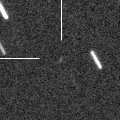
|
It is expected to brighten up to 16 mag in winter. Now it is 18.7 mag (Oct. 27, F. Kugel, J. Nicolas). It stays 16 mag for a while. In the Northern Hemisphere, it stays observable in good condition. In the Southern Hemisphere, it will be unobservable soon. But it will be observable again in November. It is fainter than this ephemeris recently.
Date(TT) R.A. (2000) Decl. Delta r Elong. m1 Best Time(A, h)
Nov. 4 11 54.20 9 11.5 2.617 2.064 46 16.7 4:57 (279, 28)
Nov. 11 11 54.97 6 35.4 2.523 2.066 51 16.7 5:03 (287, 33)
|

|
Now it is 16.5 mag (Oct. 21, Yukihiro Sugiyama). It stays 17 mag for a while. It stays observable in good condition.
Date(TT) R.A. (2000) Decl. Delta r Elong. m1 Best Time(A, h)
Nov. 4 4 54.92 -12 31.5 6.570 7.312 135 16.7 2:05 ( 0, 43)
Nov. 11 4 52.91 -12 41.0 6.499 7.280 139 16.7 1:35 ( 0, 42)
|
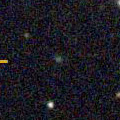
|
Now it is 17.3 mag (Oct. 27, ATLAS-HKO, Haleakala). It stays 17 mag for a while. In the Northern Hemisphere, it stays observable in good condition. It stays extremely low in the Southern Hemisphere.
Date(TT) R.A. (2000) Decl. Delta r Elong. m1 Best Time(A, h)
Nov. 4 4 59.22 41 12.5 5.918 6.701 139 16.7 2:10 (180, 84)
Nov. 11 4 57.13 41 25.5 5.859 6.698 145 16.7 1:40 (180, 84)
|
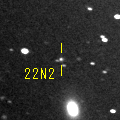
|
It is expected to brighten up to 11.5 mag in 2025 autumn, and it will be observable in good condition. Now it is 17.0 mag (Sept. 22, ATLAS South Africa). It stays 16 mag for a while. It will be getting lower gradually after this, and it will be unobservable in January.
Date(TT) R.A. (2000) Decl. Delta r Elong. m1 Best Time(A, h)
Nov. 4 20 36.06 -19 3.8 6.519 6.517 85 16.8 18:29 ( 13, 35)
Nov. 11 20 38.23 -18 52.7 6.589 6.474 79 16.8 18:24 ( 19, 34)
|

|
It brightened up to 11.8 mag in summer (June 17, Osamu Miyazaki). Now it is 15.5 mag (Oct. 29, Ken-ichi Kadota). It will fade out rapidly after this. It will be fainter than 18 mag in December. In the Northern Hemisphere, it stays observable in good condition. In the Southern Hemisphere, it will be getting lower gradually. It is brighter than this ephemeris recently.
Date(TT) R.A. (2000) Decl. Delta r Elong. m1 Best Time(A, h)
Nov. 4 20 31.20 -3 11.1 2.206 2.394 88 16.8 18:29 ( 20, 50)
Nov. 11 20 41.37 -3 4.7 2.314 2.422 84 17.1 18:24 ( 24, 49)
|
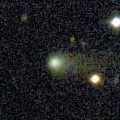
|
It brightened up to 13.9 mag in early 2023 (Jan. 21, Hidenori Nohara). Now it is 16.3 mag (June 17, Ken-ichi Kadota). It stays 17 mag for a while. In the Northern Hemisphere, it will be getting higher gradually. In the Southern Hemisphere, it is not observable now, but it will appear in December.
Date(TT) R.A. (2000) Decl. Delta r Elong. m1 Best Time(A, h)
Nov. 4 13 23.29 8 48.0 5.005 4.172 29 16.8 4:57 (266, 10)
Nov. 11 13 31.28 8 16.4 4.994 4.209 33 16.8 5:03 (270, 15)
|

|
Very far object. Now it is 16.6 mag (Oct. 18, ATLAS South Africa). It stays 17 mag for a while. In the Northern Hemisphere, it is not observable now. In the Southern Hemisphere, it stays observable in good condition.
Date(TT) R.A. (2000) Decl. Delta r Elong. m1 Best Time(A, h)
Nov. 4 4 37.01 -77 9.8 10.335 10.313 85 16.8 1:45 ( 0,-22)
Nov. 11 4 20.70 -77 22.2 10.357 10.313 84 16.8 1:02 ( 0,-22)
|
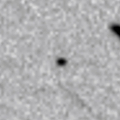
|
It will approach to Earth down to 0.2 a.u. from February to March, and it is expected to brighten up to 13 mag. Now it is 18.2 mag (Nov. 2, Ken-ichi Kadota). It will brighten rapidly after this. It stays observable in good condition.
Date(TT) R.A. (2000) Decl. Delta r Elong. m1 Best Time(A, h)
Nov. 4 0 5.25 -2 16.6 0.687 1.578 139 17.2 21:11 ( 0, 53)
Nov. 11 23 58.57 -4 33.9 0.667 1.507 129 16.9 20:37 ( 0, 50)
|
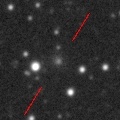
|
Now it is 16.4 mag (Oct. 15, Yukihiro Sugiyama). It stays 17 mag for a while. It will be getting lower gradually after this, and it will be unobservable in February in the Northern Hemisphere, or in December in the Southern Hemisphere.
Date(TT) R.A. (2000) Decl. Delta r Elong. m1 Best Time(A, h)
Nov. 4 19 0.67 -12 31.7 2.707 2.449 64 16.9 18:29 ( 41, 32)
Nov. 11 19 12.32 -12 23.7 2.769 2.437 60 17.0 18:24 ( 44, 31)
|

|
Now it is 17.4 mag (Oct. 17, D. Buczynski). It stays 17 mag for a while. In the Northern Hemisphere, it stays observable in good condition. It locates somewhat low in the Southern Hemisphere. But it will become high in autumn.
Date(TT) R.A. (2000) Decl. Delta r Elong. m1 Best Time(A, h)
Nov. 4 5 6.91 38 23.8 4.465 5.256 139 17.1 2:17 (180, 87)
Nov. 11 5 4.47 38 5.3 4.384 5.235 146 17.0 1:47 (180, 87)
|

|
Now it is 16.4 mag (Oct. 25, ATLAS Chile). Fading slowly. It will be fainter than 18 mag in January. It stays observable in good condition.
Date(TT) R.A. (2000) Decl. Delta r Elong. m1 Best Time(A, h)
Nov. 4 3 47.24 4 57.7 2.169 3.117 159 17.0 0:58 ( 0, 60)
Nov. 11 3 42.65 4 36.1 2.166 3.130 163 17.0 0:26 ( 0, 60)
|

|
Now it is 16.9 mag (Oct. 6, Ken-ichi Kadota). Fading slowly. It will be fainter than 18 mag in January. It will be getting lower gradually. It was very faint as 21.5 mag in 2021. It seems to be bright temporarily in outburst.
Date(TT) R.A. (2000) Decl. Delta r Elong. m1 Best Time(A, h)
Nov. 4 21 11.31 -11 42.8 4.428 4.633 95 17.1 18:29 ( 3, 43)
Nov. 11 21 14.11 -11 31.4 4.551 4.647 89 17.2 18:24 ( 10, 43)
|
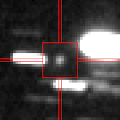
|
It is expected to brighten up to 12.5 mag in 2024 summer. Now it is 17.3 mag (July 28, ATLAS South Africa). Brightening slowly. In the Northern Hemisphere, it is not observable now. In the Southern Hemisphere, it will be getting higher gradually. Around the high light, it is observable in good condition in the Southern Hemisphere, but it locates very low in the Northern Hemisphere.
Date(TT) R.A. (2000) Decl. Delta r Elong. m1 Best Time(A, h)
Nov. 4 12 43.24 -49 20.7 5.274 4.572 41 17.2 4:57 (319,-17)
Nov. 11 12 53.50 -50 23.7 5.204 4.517 41 17.1 5:03 (322,-14)
|

|
Now it is 17.3 mag (Oct. 12, ATLAS Chile). Fading slowly. It will be fainter than 18 mag in December. It stays extremely low in the Northern Hemisphere. In the Southern Hemisphere, it will be unobservable in December.
Date(TT) R.A. (2000) Decl. Delta r Elong. m1 Best Time(A, h)
Nov. 4 18 27.02 -22 6.5 3.587 3.131 55 17.2 18:29 ( 43, 20)
Nov. 11 18 36.65 -22 3.5 3.705 3.168 50 17.3 18:24 ( 45, 18)
|
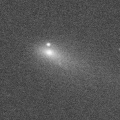
|
It brightened up to 12.8 mag in spring (Mar. 8, Taras Prystavski). Now it is 17.0 mag (Oct. 19, Ken-ichi Kadota). It will fade out rapidly after this. It will be fainter than 18 mag in December. It stays observable in good condition.
Date(TT) R.A. (2000) Decl. Delta r Elong. m1 Best Time(A, h)
Nov. 4 0 36.36 -5 60.0 1.960 2.823 143 17.2 21:43 ( 0, 49)
Nov. 11 0 33.14 -5 44.8 2.057 2.859 136 17.4 21:12 ( 0, 49)
|
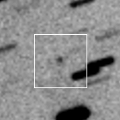
|
Now it is 17.4 mag (Oct. 23, Ken-ichi Kadota). It stays 17 mag for a while. In the Northern Hemisphere, it stays observable in good condition. In the Southern Hemisphere, it will be unobservable in December.
Date(TT) R.A. (2000) Decl. Delta r Elong. m1 Best Time(A, h)
Nov. 4 23 37.06 54 45.5 3.691 4.369 127 17.2 20:43 (180, 70)
Nov. 11 23 21.60 53 5.3 3.717 4.353 124 17.2 20:00 (180, 72)
|

|
Now it is 17.2 mag (Oct. 26, ATLAS South Africa). It stays 17 mag for a while. It stays extremely low in the Northern Hemisphere. In the Southern Hemisphere, it stays observable in good condition.
Date(TT) R.A. (2000) Decl. Delta r Elong. m1 Best Time(A, h)
Nov. 4 5 13.23 -40 7.3 7.442 7.891 113 17.3 2:23 ( 0, 15)
Nov. 11 5 11.36 -40 30.0 7.396 7.866 114 17.3 1:53 ( 0, 15)
|
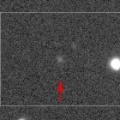
|
It will be observable at 15-16 mag from 2024 to 2025. Now it is 17.9 mag (Apr. 25, A. Diepvens). Brightening slowly. In the Northern Hemisphere, it will be getting higher gradually. In the Southern Hemisphere, it is not observable now, but it will be observable soon.
Date(TT) R.A. (2000) Decl. Delta r Elong. m1 Best Time(A, h)
Nov. 4 12 15.47 6 18.8 4.593 3.892 40 17.5 4:57 (278, 22)
Nov. 11 12 22.51 5 37.8 4.506 3.877 45 17.4 5:03 (283, 27)
|

|
The cometary activity was detected by Masayoshi Yoshimi on Sept. 15. Now it is 16.0 mag (Sept. 15, Masayoshi Yoshimi). It will fade out rapidly after this. It will be fainter than 18 mag soon. In the Northern Hemisphere, it stays observable in good condition. In the Southern Hemisphere, it will never be observable after this.
Date(TT) R.A. (2000) Decl. Delta r Elong. m1 Best Time(A, h)
Nov. 4 22 0.08 61 15.8 0.302 1.146 113 17.5 19:08 (180, 63)
Nov. 11 22 31.20 64 25.7 0.325 1.166 115 17.7 19:12 (180, 60)
|
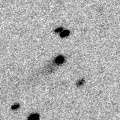
|
Now it is 17.0 mag (Apr. 11, Michael Jager). It stays 18 mag for a while. In the Northern Hemisphere, it will be getting higher gradually. In the Southern Hemisphere, it is not observable now, but it will be observable soon.
Date(TT) R.A. (2000) Decl. Delta r Elong. m1 Best Time(A, h)
Nov. 4 12 30.82 12 29.6 9.962 9.238 41 17.6 4:57 (271, 23)
Nov. 11 12 31.80 12 33.4 9.890 9.251 47 17.6 5:03 (275, 29)
|
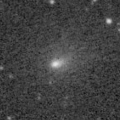
|
Now it is 16.7 mag (Sept. 5, Thomas Lehmann). Fading gradually. It will be fainter than 18 mag soon. It stays extremely low in the Northern Hemisphere. In the Southern Hemisphere, it will be getting lower gradually.
Date(TT) R.A. (2000) Decl. Delta r Elong. m1 Best Time(A, h)
Nov. 4 19 13.42 -35 17.0 2.549 2.312 64 17.7 18:29 ( 26, 14)
Nov. 11 19 20.44 -36 23.6 2.725 2.382 59 17.9 18:24 ( 29, 11)
|

|
It returned for the first time in 68 years. It will brighten up to 7.5 mag in 2024 summer. Now it is 18.8 mag (Oct. 18, Ken-ichi Kadota). It will brighten rapidly after this. It stays observable in good condition. At the high light, it locates low in the Northern Hemisphere, or it is not observable in the Southern Hemisphere.
Date(TT) R.A. (2000) Decl. Delta r Elong. m1 Best Time(A, h)
Nov. 4 4 9.07 -21 4.4 2.519 3.314 136 18.0 1:19 ( 0, 34)
Nov. 11 4 1.93 -21 20.0 2.433 3.244 138 17.7 0:45 ( 0, 34)
|

|
First return of a new periodic comet which brightened up to 10 mag in 2001. It is expected to brighten up to 12-13 mag from February to March in 2024. It will brighten rapidly after this. In the Northern Hemisphere, it will be getting higher gradually. In the Southern Hemisphere, it will be getting lower gradually after this, and it will be unobservable in January.
Date(TT) R.A. (2000) Decl. Delta r Elong. m1 Best Time(A, h)
Nov. 4 23 38.16 -40 6.9 1.451 2.033 111 17.9 20:44 ( 0, 15)
Nov. 11 23 26.28 -36 16.8 1.455 1.975 106 17.8 20:05 ( 0, 19)
|
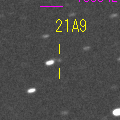
|
Now it is 18.9 mag (Sept. 25, W. Hasubick). It stays 18 mag for a while. It stays observable in good condition.
Date(TT) R.A. (2000) Decl. Delta r Elong. m1 Best Time(A, h)
Nov. 4 7 36.24 10 16.2 7.422 7.762 106 17.9 4:46 ( 0, 65)
Nov. 11 7 32.85 10 3.7 7.303 7.761 114 17.8 4:15 ( 0, 65)
|

|
Now it is 18.6 mag (Oct. 23, D. Buczynski). It stays 18 mag for a while. It stays observable in good condition.
Date(TT) R.A. (2000) Decl. Delta r Elong. m1 Best Time(A, h)
Nov. 4 5 6.13 25 7.9 3.296 4.133 143 17.9 2:16 ( 0, 80)
Nov. 11 5 3.01 24 55.0 3.240 4.133 150 17.9 1:46 ( 0, 80)
|
|
![]()
 C/2021 Y1 ( ATLAS )
C/2021 Y1 ( ATLAS ) (3200) Phaethon
(3200) Phaethon 199P/Shoemaker 4
199P/Shoemaker 4 C/2022 E3 ( ZTF )
C/2022 E3 ( ZTF ) C/2014 UN271 ( Bernardinelli-Bernstein )
C/2014 UN271 ( Bernardinelli-Bernstein ) C/2022 A3 ( Lemmon-ATLAS )
C/2022 A3 ( Lemmon-ATLAS ) 117P/Helin-Roman-Alu 1
117P/Helin-Roman-Alu 1 C/2020 Y2 ( ATLAS )
C/2020 Y2 ( ATLAS ) C/2022 V2 ( Lemmon )
C/2022 V2 ( Lemmon ) C/2022 QE78 ( ATLAS )
C/2022 QE78 ( ATLAS ) C/2021 S4 ( Tsuchinshan )
C/2021 S4 ( Tsuchinshan ) C/2022 N2 ( PanSTARRS )
C/2022 N2 ( PanSTARRS ) 237P/LINEAR
237P/LINEAR C/2020 S4 ( PanSTARRS )
C/2020 S4 ( PanSTARRS ) C/2019 E3 ( ATLAS )
C/2019 E3 ( ATLAS ) 207P/NEAT
207P/NEAT 219P/LINEAR
219P/LINEAR C/2022 U3 ( Bok )
C/2022 U3 ( Bok ) 170P/Christensen
170P/Christensen P/2023 M4 ( ATLAS )
P/2023 M4 ( ATLAS ) C/2023 C2 ( ATLAS )
C/2023 C2 ( ATLAS ) 81P/Wild 2
81P/Wild 2 71P/Clark
71P/Clark C/2022 U1 ( Leonard )
C/2022 U1 ( Leonard ) C/2022 R6 ( PanSTARRS )
C/2022 R6 ( PanSTARRS ) 65P/Gunn
65P/Gunn 2019 AV4
2019 AV4 C/2020 F2 ( ATLAS )
C/2020 F2 ( ATLAS ) C/2022 W3 ( Leonard )
C/2022 W3 ( Leonard ) 13P/Olbers
13P/Olbers P/2001 Q6 ( NEAT )
P/2001 Q6 ( NEAT ) C/2021 A9 ( PanSTARRS )
C/2021 A9 ( PanSTARRS ) 404P/2020 M6 ( Bressi )
404P/2020 M6 ( Bressi )![]()



























































